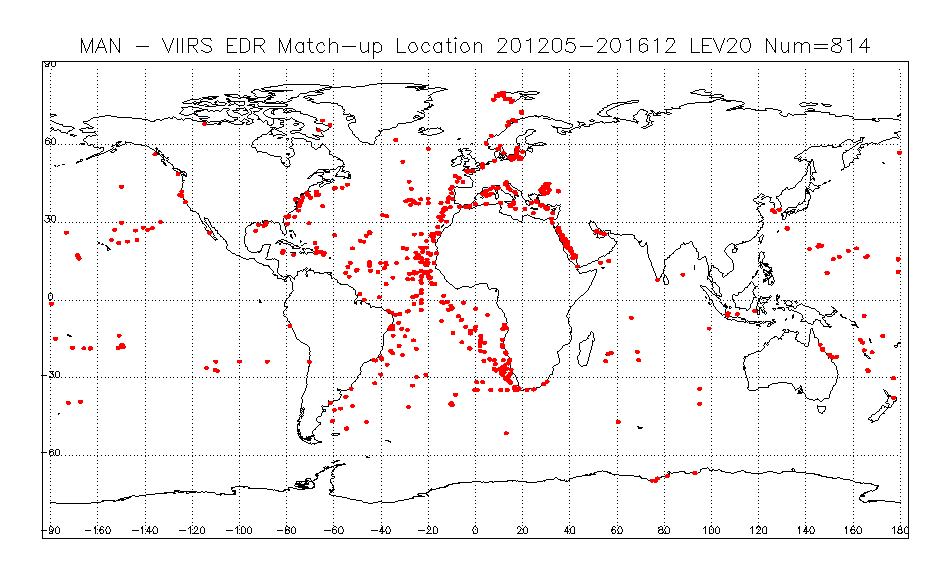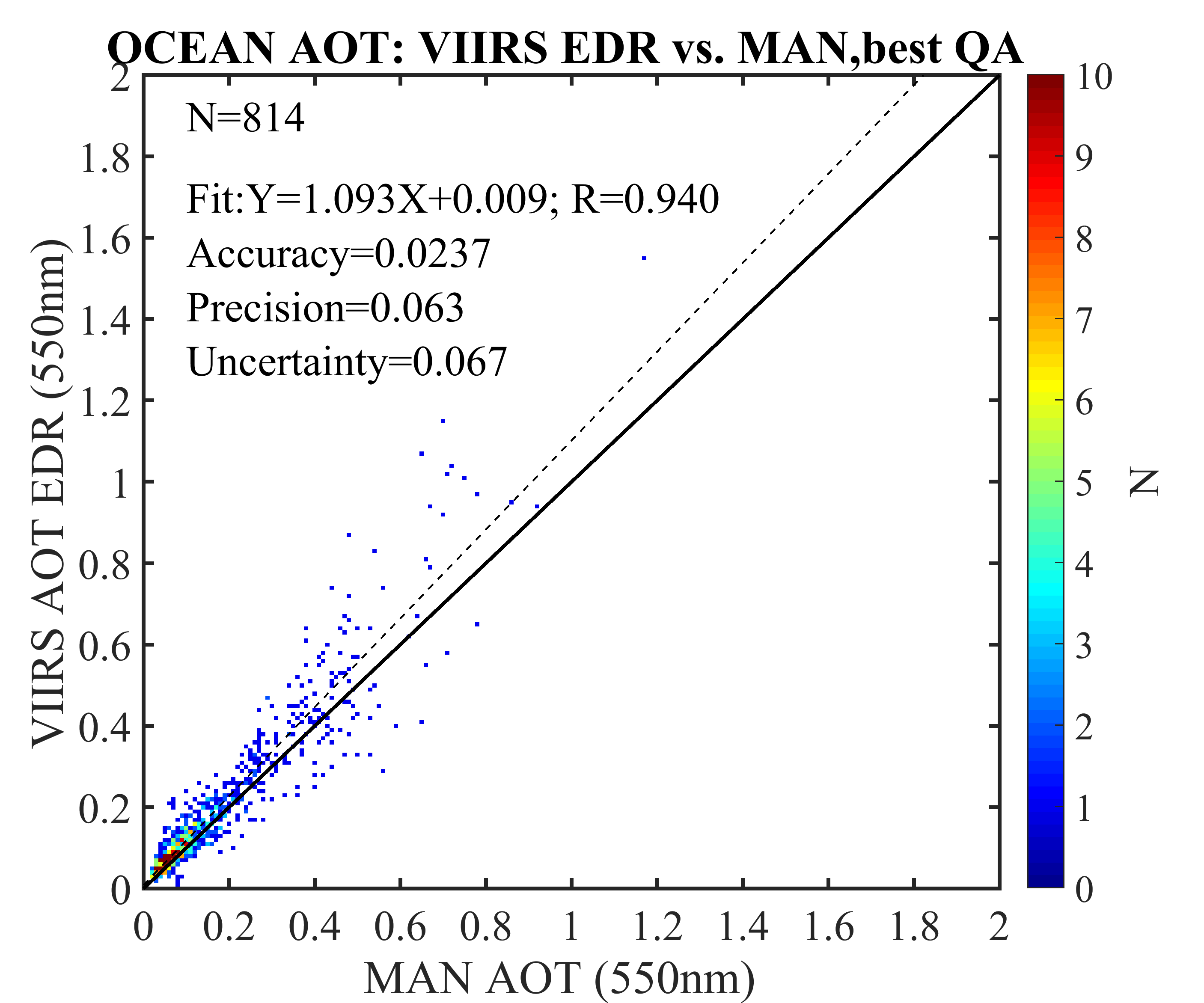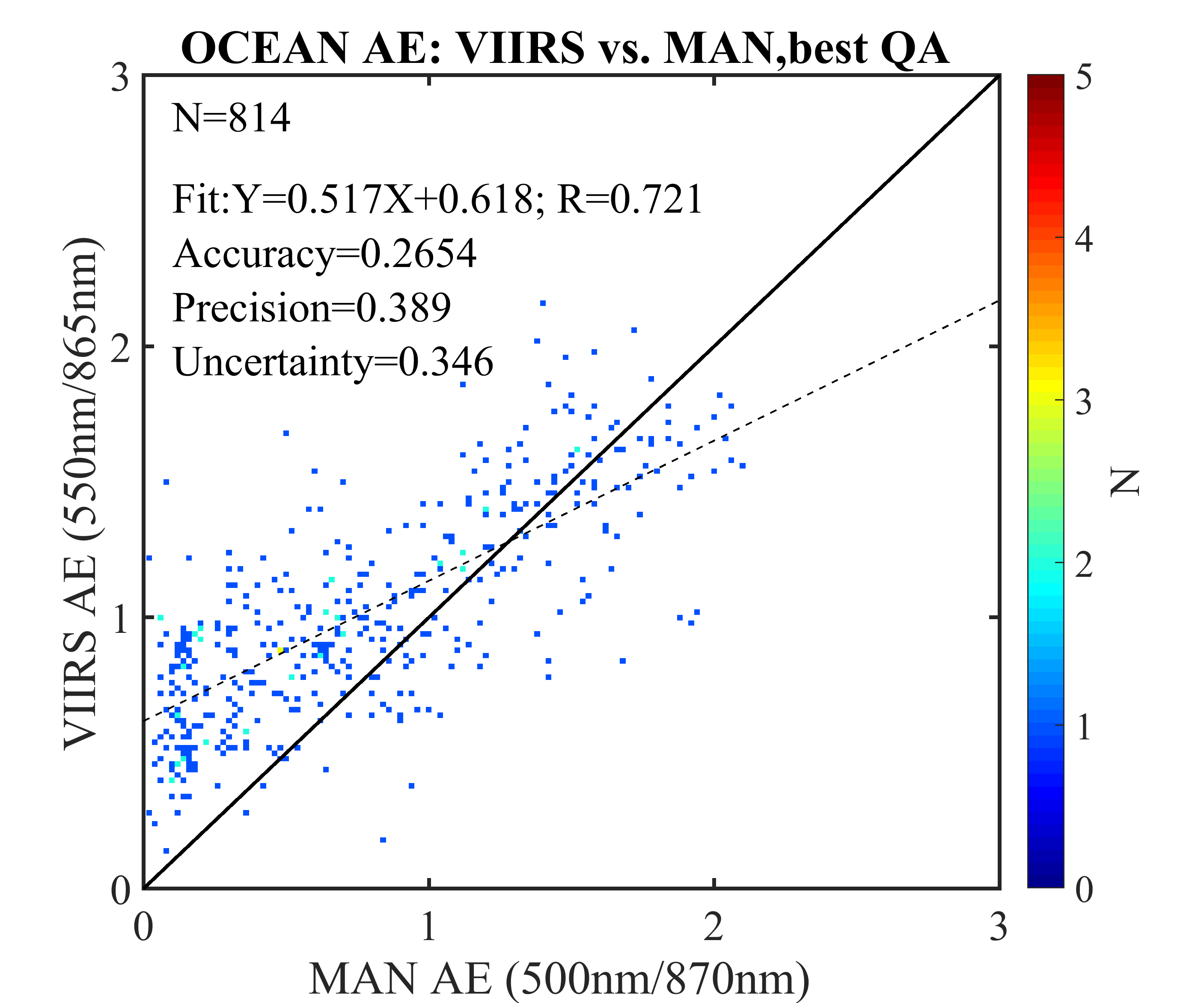STAR / SMCD / VIIRS Aerosol Calibration and Validation
VIIRS Aerosol Product Evaluation with Maritime Aerosol Network (MAN) Data
The Maritime Aerosol Network (MAN), under the AERONET umbrella of programs, is a network of ship-borne aerosol optical thickness (AOT) measurements using hand-held sun photometers (Smirnov et al., 2009). The estimated uncertainty of the aerosol optical depth in each channel does not exceed ±0.02. These instruments are deployed periodically on ships of opportunity and research vessels and provide the only regular measurements of aerosol properties over the global ocean. The MAN datasets provide opportunity to validate VIIRS retrievals over Open Ocean, far from coastlines and islands.
MAN measurements were often taken at irregular time intervals and sometime multiple measurements were taken within a very short time period. MAN PIs estabilished a rule to consolidate several measurements within short time period into a single report that represents the mean of these measurements (series average). Consecutive measurements taken with intervals between any two measurements that are less than two minutes are grouped into a series (see Smirnov et al., 2009).
The mean of MAN measurements of a series is treated as a single observation point in time, and sometimes also as a spatial average because of ship movements. All VIIRS-MAN comparisons are collocated. The match-up criteria, following Kleidman et al. (2010), are VIIRS EDRs falling within ±0.25° box at the location of the MAN measurement and within ±30 minutes of measurement time. MAN AOT at 550nm is interpolated from 2nd order polynominal fitting with available AOTs reported at various wavelengths.
VIIRS High Quality AOT EDR and Angstrom exponent (AE) EDR versus MAN Level 2 Series Average Data



References
Kleidman, R. G., A. Smirnov, R. C. Levy, S. Mattoo, and D. Tanre Evaluation and Windspeed Dependence of MODIS Aerosol Retrievals Over Open Ocean, 2012, IEEE Trans. Geosci. Remote Sens., v.50, no.2, p.429(7).
Smirnov, A., B. N. Holben, I. Slutsker, D. M. Giles, C. R. McClain, T. F. Eck, S. M. Sakerin, A. Macke, P. Croot, G. Zibordi, P. K. Quinn, J. Sciare, S. Kinne, M. Harvey, T. J. Smyth, S. Piketh, T. Zielinski, A. Proshutinsky, J. I. Goes, N. B. Nelson, P. Larouche, V. F. Radionov, P. Goloub, K. Krishna Moorthy, R. Matarrese, E. J. Robertson, and F. Jourdin (2009), Maritime Aerosol Network as a component of Aerosol Robotic Network, J. Geophys. Res., 114, D06204, doi:10.1029/2008JD011257.
